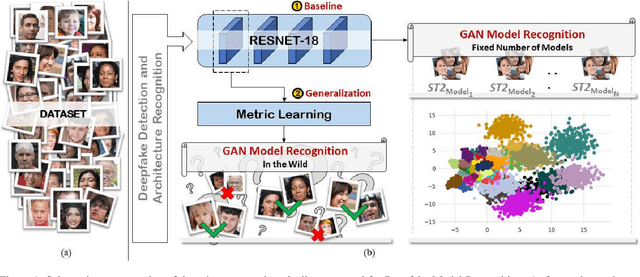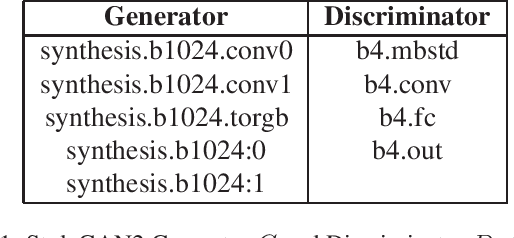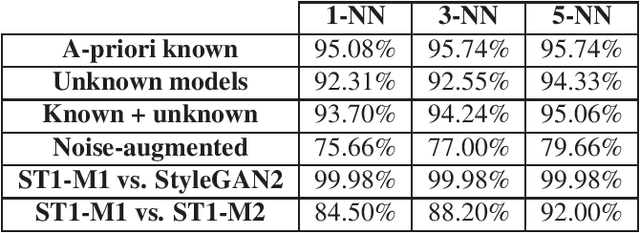On the Exploitation of Deepfake Model Recognition
Paper and Code
Apr 09, 2022



Despite recent advances in Generative Adversarial Networks (GANs), with special focus to the Deepfake phenomenon there is no a clear understanding neither in terms of explainability nor of recognition of the involved models. In particular, the recognition of a specific GAN model that generated the deepfake image compared to many other possible models created by the same generative architecture (e.g. StyleGAN) is a task not yet completely addressed in the state-of-the-art. In this work, a robust processing pipeline to evaluate the possibility to point-out analytic fingerprints for Deepfake model recognition is presented. After exploiting the latent space of 50 slightly different models through an in-depth analysis on the generated images, a proper encoder was trained to discriminate among these models obtaining a classification accuracy of over 96%. Once demonstrated the possibility to discriminate extremely similar images, a dedicated metric exploiting the insights discovered in the latent space was introduced. By achieving a final accuracy of more than 94% for the Model Recognition task on images generated by models not employed in the training phase, this study takes an important step in countering the Deepfake phenomenon introducing a sort of signature in some sense similar to those employed in the multimedia forensics field (e.g. for camera source identification task, image ballistics task, etc).
 Add to Chrome
Add to Chrome Add to Firefox
Add to Firefox Add to Edge
Add to Edge